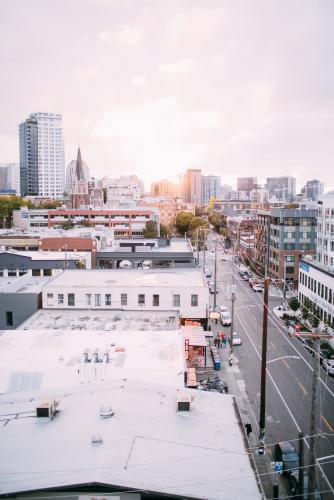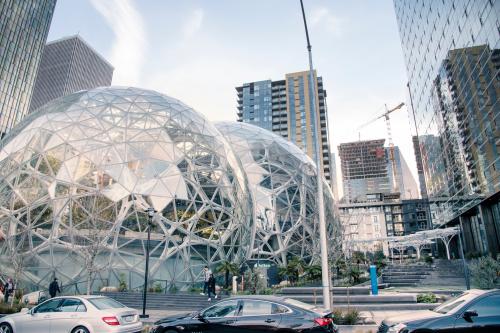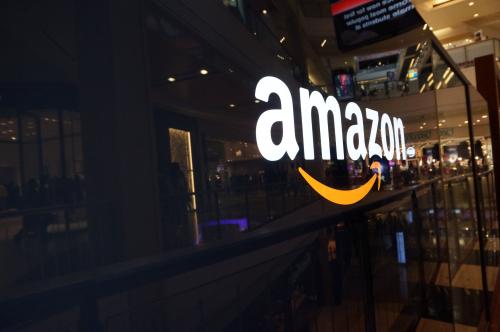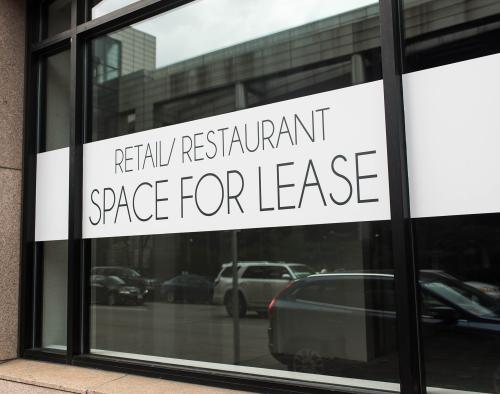More than one year after Amazon announced its intention to establish a new headquarters outside of Seattle, the company appears poised to open two major offices in the New York and Washington, D.C. metro areas. The choice of metro areas likely reflects strong human, financial, and political capital in the New York and Washington, D.C. metro areas. The selection of neighborhoods within those metros—Long Island City in Queens, N.Y. and Crystal City in Arlington, Va.—shows considerable judgment by Amazon’s real estate team. As I’ve written before, both the New York and the District metro areas have high housing costs and tight supply. But within the metros, the two chosen neighborhoods have relatively flexible real estate markets, and some striking parallel features.
Think outside the CBD
Both Long Island City (LIC) and Crystal City are slightly outside the primary Central Business District (CBD) for their regions. LIC is on the western edge of Queens, less than three miles from Midtown Manhattan. Arlington County’s Crystal City is about 4.5 miles southwest of downtown Washington, D.C. Being a bit away from downtown offers some advantages for building a substantial new campus, notably less competition and lower rents for Class A office space. Both neighborhoods have multiple subway and/or bus lines that connect them to the CBD and residential neighborhoods. (One drawback to both metro areas: NYC’s subway and the District’s Metro are facing annoyed riders over deferred maintenance issues. Both regions will need to grapple with transportation infrastructure in any case; Amazon’s decision could provide the impetus to break toxic local politics.)
High-density zoning is Amazon’s friend, NIMBY residents are not
Amazon’s team no doubt spent hours poring over the local zoning rules of possible sites to determine whether they could build the type of high-density, vertical campus they have developed in Seattle. Just looking at New York’s and the District’s skylines, LIC and Crystal City stand out as taller than many adjacent neighborhoods. Both housing and office space in the District of Columbia are constrained by the city’s strict height limit, preponderance of low-density zoning, historic preservation, and opposition from neighboring residents. Much of Manhattan and Brooklyn have similar constraints from historic preservation and NIMBYism. Arlington County’s planning department has designated the Pentagon City-Crystal City neighborhood as a major planning corridor, and the entire area is zoned for high-density offices and apartments. Long Island City has an impressive inventory of newly built commercial and residential skyscrapers, ready for Amazon to move in. Both LIC and Crystal City are mixed-use neighborhoods, with relatively small residential populations.
Build HQ2 and hipster amenities will follow
From the initial announcement of the HQ2 search, commentators argued that local amenities—outdoor recreation, restaurants and bars, and some cultural edginess—would be important factors in location choice. While the NYC and the District metros offer plenty of amenities, it’s not obvious that LIC or Crystal City would crack the top five hipster neighborhood rankings, partly because they’re so dominated by large commercial buildings. But they’re both close to high-amenity residential areas—Jackson Heights, Astoria, and Williamsburg in New York, Alexandria, Clarendon, and the Southwest Waterfront in Washington, D.C. And 25,000 new Amazon employees will surely draw microbreweries and pour-over coffee bars to their office environs before too long.
Following a year of uncertainty and drama, local sentiment among the host cities will likely be mixed: business and civic leaders eager for an economic adrenaline shot, some residents wary of higher housing costs and increased traffic congestion. Hopefully, policymakers in NYC and District metros will expand their housing supply and upgrade their transportation infrastructure to accommodate both Amazon and existing businesses and residents. Even HQ2 skeptics should breathe slightly easier with the announcement that Amazon has selected two relatively growth-friendly neighborhoods.







Commentary
Amazon’s real estate team did its homework
November 6, 2018